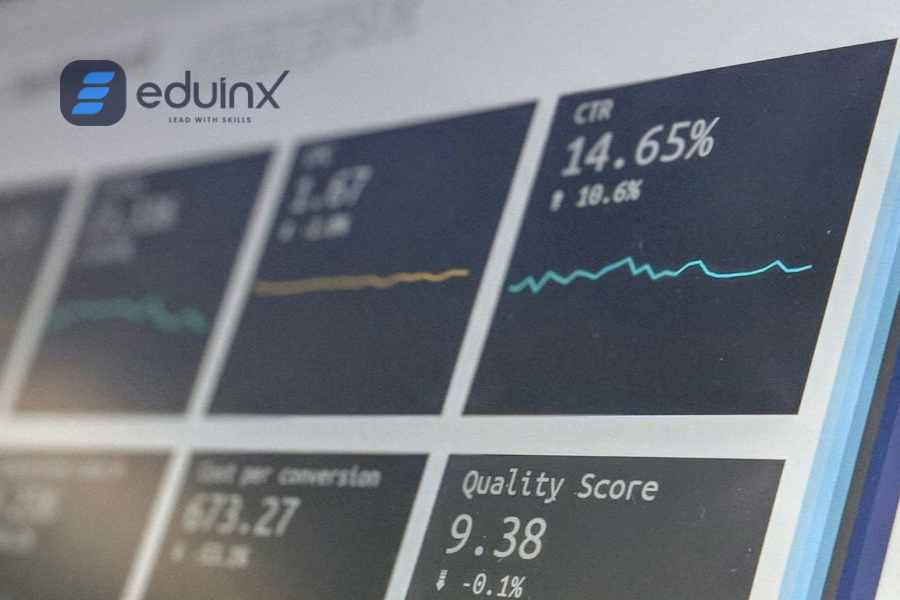Introduction
Did you know that neural networks are applied in over six major industries? The main advantage is that neural networks can help AI systems make decisions with limited human interference. They can learn and model relationships between complex and non-linear input and output data. If you are keen on learning data science, knowing the basic principles of a neural network and its influence on data is crucial. This can help you understand complex data science concepts and apply them at work. Also, if you are a fresher, knowledge of neural networks will broaden your understanding of machine learning and data science concepts. This blog covers a brief explanation of neural networks, their functions, and their uses in data science.
What is a Neural Network?
Picture the central nervous system of a human body, it comprises a collection of neurons that obtain inputs and are in conjunction with information from other nodes and transmit them to the brain. A neural network is like the central nervous system, but the only difference is that it develops an output without programmed rules and resolves problems through a trial-and-error method. It is made up of densely connected processing nodes like the neurons in the brain. Here, each node may be connected to different notes in multiple layers above and below it. These nodes move data forward in only one direction.
A simple neural network comprises an input and output layer with a hidden layer between them. This is known as a deep learning network, where each layer of the node trains data based on the output from the previous layer. The more layers, the greater the ability to recognize complex information, which is based on data from the previous layers. A network makes decisions by assigning a number or weight to a connected node, which represents the value of information assigned to an individual node. When a node receives information from other nodes, it calculates the total weight or value of the information.
Working of a Neural Network
In a neural network, each neuron can make simple decisions based on mathematical calculations. A cluster of neurons can analyze complex problems and provide an appropriate solution. There are two types of neural networks which are deep and shallow. A deep neural network consists of an input, hidden layer, and an output layer, this greatly increases the complexity of the problems that can be analyzed and resolved. A neural network completes a task by examining labelled training examples and distinguishes them between items by using visual patterns and correlations with the labels. They are involved in scoring the input, calculating loss, and updating the model.
Uses of a Neural Network
When it comes to data, neural networks are used to classify and cluster raw data which is unlabeled. They work with online image comparison or financial decision-making tools for MNCs and large corporate companies. E-commerce and marketing companies can use a neural network to look for patterns in web browsing and suggest recommendations. An artificial neural network teaches computers to process data that is inspired by the human brain. A convolutional neural network uses three-dimensional data for image classification and object recognition tasks.
Classification
One unique characteristic of neural networks is that they are great at classifying tasks which need labeled datasets for supervised learning. They can process thousands of photos and consistently apply labels quickly and efficiently. They are efficient at solving complex problems and classify data according to key features and other attributes. A neural network can learn to classify any data with a label that correlates to the information that the network can analyze.
Clustering
Neural networks are great at identifying differences and work efficiently in clustering or detecting similarities. Did you know that a neural network can analyze millions of data points and cluster them according to similarities? This function can be applied to emails, voice messages, images, messages or news articles. In cybersecurity, clustering is used to identify anomalies, i.e. things which do not correspond with group characteristics. It can identify fraudulent activities by identifying data that does not match with common actions.
Predictive analytics- Regressions
Regression analysis helps neural networks to predict the future state of an attribute based on past events. A future event just becomes another data point. A neural network will be able to predict the next string of numbers that are most likely to occur. This can be applied to more complex events. For instance, e-commerce companies use this technique to predict when a customer may likely leave a store and provide suggestions that retain them.
Regression analysis is the basis for predictive analytics. It helps a data scientist to model the relationship between a dependent variable and one or more independent variables. Basic neural networks use linear regression to manage one input and one output. If there are many variables, the node of the network performs multiple linear regression by weighing each data point as it moves through the layers. The net tests the inputs as it tries to reduce error. Here, each node is like a switch which allows or blocks the input of the nodes around it through the network. One unique aspect of neural networks is that they use techniques such as gradient descent and backpropagation to refine their algorithms to find an optimal model for the regression.
Applications of a Neural Network in Data Science
As the current world is racing toward being fully AI, neural networks have become crucial for the development of machine learning and AI applications. They are widely used in self-driving cars, facial recognition, language translations, and more. With the lower cost of cloud computing and graphics processing units, the growth of artificial intelligence has accelerated to manage the flow of images and training. Did you know that the availability of electronic images and other data makes training faster and easier? The ability to cluster, classify, and make predictive decisions has amplified the integration of neural networks in science research, advertising, e-commerce and other industries. They have influenced the current industry and have become a key player in driving process optimization.
Now that you have learnt about what a neural network is, you should be able to understand machine learning, gen AI, and data science with ease. Eduinx offers data science with generative AI course for professionals and freshers to help scale up their careers and perform efficiently. In today’s competitive landscape, industries are constantly changing and replacing employees who are unable to cope with this change. Therefore, it is essential for you to improve your skillset with Eduinx’s data science with gen AI course. Reach out to Eduinx for more details.
Reference links:
https://www.mastersindatascience.org/learning/what-is-ai/neural-network/#:~:text=Explore%20a%20Career%20in%20Data,them%20will%20grow%20as%20well https://aws.amazon.com/what-is/neural-network/




